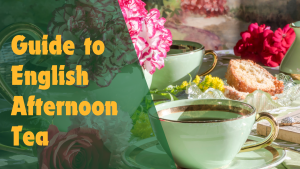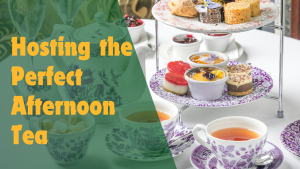Introduction to the Art of Afternoon Tea Service
The ritual of serving afternoon tea, a cherished tradition steeped in British history, offers a moment of luxury in our all-too-busy lives. It’s a practice that has delighted tea enthusiasts and social gatherings for centuries, originating in the early 1840s. According to the UK Tea & Infusions Association, Anna, the Duchess of Bedford, is credited with creating this delightful tradition as a means to satiate hunger between lunch and dinner. Today, afternoon tea serves not only as a bridge between meals but as a celebrated occasion, embodying the elegance and charm of British culture. As Olivia Kensington, a connoisseur of culinary arts and hospitality, I invite you to join me in exploring the exquisite art of serving afternoon tea with grace and flair.
The Essentials of Afternoon Tea
At the heart of any afternoon tea are three pivotal components: sandwiches, scones, and sweets. Each plays a distinct role in the afternoon tea experience, carefully balancing flavours and textures to create a harmonious ensemble.
Sandwiches should be delicate and crustless, offering a light start to the tea. Traditional fillings include cucumber, egg mayonnaise with cress, smoked salmon with cream cheese, and ham with mustard. Variety is key, but simplicity and quality of ingredients should never be compromised.
Scones, served warm, are the bridge between savory and sweet. They should be light, fluffy, and accompanied by clotted cream and jam—preferably strawberry or raspberry. The debate over whether cream or jam should be spread first has long divided enthusiasts, but I say, serve it with both and let your guests decide their preference.
Sweets cap off the tea with a touch of elegance. This course can include an assortment of pastries, cakes, and petit fours. The selection should be visually appealing and offer a range of flavours, from rich chocolate to light, fruity notes.
Selecting the tea itself is as crucial as the food. Offering a variety from traditional black teas, like Earl Grey and Assam, to herbal infusions caters to all tastes. The tea should be brewed with care, ensuring a perfect cup every time.
The Traditional Serving Times
Understanding when to serve afternoon tea is essential for capturing the essence of this elegant tradition. Traditionally, afternoon tea is enjoyed between 3:30 PM and 5:00 PM. This timing, rooted in history, bridges the long gap between lunch and dinner, providing a perfect interlude of relaxation and indulgence.
In contemporary settings, however, flexibility has become key. While staying true to tradition, I encourage adjusting the timing to suit modern lifestyles. For instance, a weekend afternoon tea can be a leisurely affair starting later, perhaps around 4:00 PM, allowing guests to unwind and enjoy without the constraints of a weekday schedule.
The beauty of afternoon tea lies not just in its timing but in the opportunity it presents for social connection. Whether adhering to the traditional hours or adapting to fit a more casual gathering, the focus should always be on creating a warm and inviting atmosphere. It’s a time to pause, savor the exquisite flavors on offer, and engage in heartfelt conversation.
Setting the Scene for Afternoon Tea
The presentation and setting of afternoon tea are as important as the food and tea themselves. A well-laid table sets the stage for an afternoon of elegance and enjoyment. Begin with a clean, crisp linen tablecloth and napkins to add a touch of sophistication. Fine china, silverware, and glassware should be arranged neatly, with each piece chosen to complement the overall aesthetic of your tea service.
For the centerpiece, consider a floral arrangement that echoes the season or your personal style. However, ensure it isn’t too tall or overpowering, as the focus should remain on the tea and your guests’ comfort. Candles can add a soft, inviting glow but opt for unscented varieties to avoid competing with the aromas of the food and tea.
Tea should be served from a teapot, emphasizing the ceremonial aspect of pouring and offering tea to your guests. A separate hot water pot can also be provided, allowing guests to adjust the strength of their tea to their preference. Remember, the essence of afternoon tea lies in the details—the way the sandwiches are arranged on the tiered stand, the warmth of the scones, and the presentation of sweets all contribute to the overall experience.
Complementing Your Tea
When it comes to enhancing the afternoon tea experience, the devil is indeed in the details. Beyond the core components of sandwiches, scones, and sweets, the accompaniments play a pivotal role in elevating the culinary delight of this tradition.
Jam and Clotted Cream: A quintessential part of the scone experience, the quality of your jam and clotted cream can make a world of difference. Opt for high-quality, rich clotted cream and jams with a high fruit content for a truly luxurious touch. The debate over whether cream or jam goes first may never be resolved, but offering both in abundance ensures your guests can indulge their preferences.
Lemon Curd and Butter: For those looking to add a bit more variety, lemon curd offers a tart, refreshing contrast to the sweetness of the jam, while butter can be a welcome addition for guests who prefer a less sweet scone topping.
The Tea Selection: While black teas like Earl Grey and Assam are traditional, expanding your tea selection to include green teas, herbal infusions, and fruit teas can cater to all tastes and dietary needs. Offering a range of teas not only accommodates preferences but also invites conversation and exploration among your guests.
A Final Touch: Don’t forget the importance of presentation. Serving these accompaniments in beautiful dishes and with elegant serving spoons can enhance the visual appeal and make the experience even more special.
The Cultural Icon
Afternoon tea is not just a meal; it’s a cultural icon that embodies the elegance and charm of British hospitality. While many establishments offer afternoon tea, there are few places as emblematic of this tradition as The Ritz in London.
The Ritz London: Known worldwide for its opulence and impeccable service, afternoon tea at The Ritz is a hallmark of luxury. The Palm Court, with its ornate decorations and live piano music, provides the perfect backdrop for this quintessentially English tradition. The experience of afternoon tea here is not just about the food and tea but the atmosphere of sophistication and tranquility.
The Importance of Ambiance: While not everyone can visit The Ritz, the ambiance it represents can be emulated at home. Focus on creating a serene and inviting environment, whether through music, décor, or the careful arrangement of your tea service. It’s about recreating that sense of escape and indulgence that afternoon tea at such a famed location offers.
Afternoon tea is a testament to the enduring allure of British culture, a tradition that continues to captivate and charm. As we embrace this delightful practice, we not only enjoy the exquisite flavors and the company of friends but also participate in a ritual that has been cherished for generations.
A Parting Cup: Embracing the Tradition
As our journey through the refined and elegant world of afternoon tea draws to a close, it’s essential to reflect on why this tradition holds such a special place in our hearts and culture. Afternoon tea is much more than a midday refreshment; it’s a cherished ritual that offers a pause, a moment of calm in our hectic lives, and a bridge to the past, connecting us to a tradition that has been savored by generations before us.
The Timelessness of Afternoon Tea: In embracing afternoon tea, we celebrate not only the exquisite tastes of tea and the delicate balance of flavors in sandwiches, scones, and sweets but also the timeless art of hospitality. It’s an opportunity to slow down, to connect with friends and family over a shared meal, and to create memories that enrich our lives.
Personal Touches: While adhering to tradition, there’s always room to infuse afternoon tea with personal touches that reflect your style and the preferences of your guests. Whether it’s experimenting with new tea blends, introducing a family favorite recipe, or adding a personal story to the presentation of a particular dish, these personal touches make the experience uniquely yours.
Embracing the Elegance of Afternoon Tea
As we conclude, let us remember that the essence of afternoon tea lies not only in the elegance of its presentation or the finesse of its components but in the sense of connection and joy it brings. This venerable tradition, with its roots deeply embedded in British culture, continues to enchant and inspire, transcending time to remain a beloved ritual.
Continuing the Tradition: I encourage you, my dear readers, to embrace the tradition of afternoon tea in your lives. Whether it’s hosting an afternoon tea for friends and family, enjoying it as a quiet moment of solitude, or seeking out the most iconic locations to experience it firsthand, let the ritual of afternoon tea be a source of pleasure and delight.
A Legacy of Hospitality: In keeping with the spirit of hospitality that defines afternoon tea, let us carry forward the legacy of warmth, welcome, and conviviality that it represents. Afternoon tea is a reminder of the beauty of simplicity, the joy of sharing, and the timeless appeal of coming together over a cup of tea.
As Olivia Kensington, I’ve had the privilege of exploring culinary traditions around the globe, yet the charm of afternoon tea, with its blend of simplicity and sophistication, remains unmatched. It is my hope that through this guide, you’ve found inspiration to delve into the delightful world of afternoon tea, crafting experiences that resonate with elegance, tradition, and a touch of personal flair.




